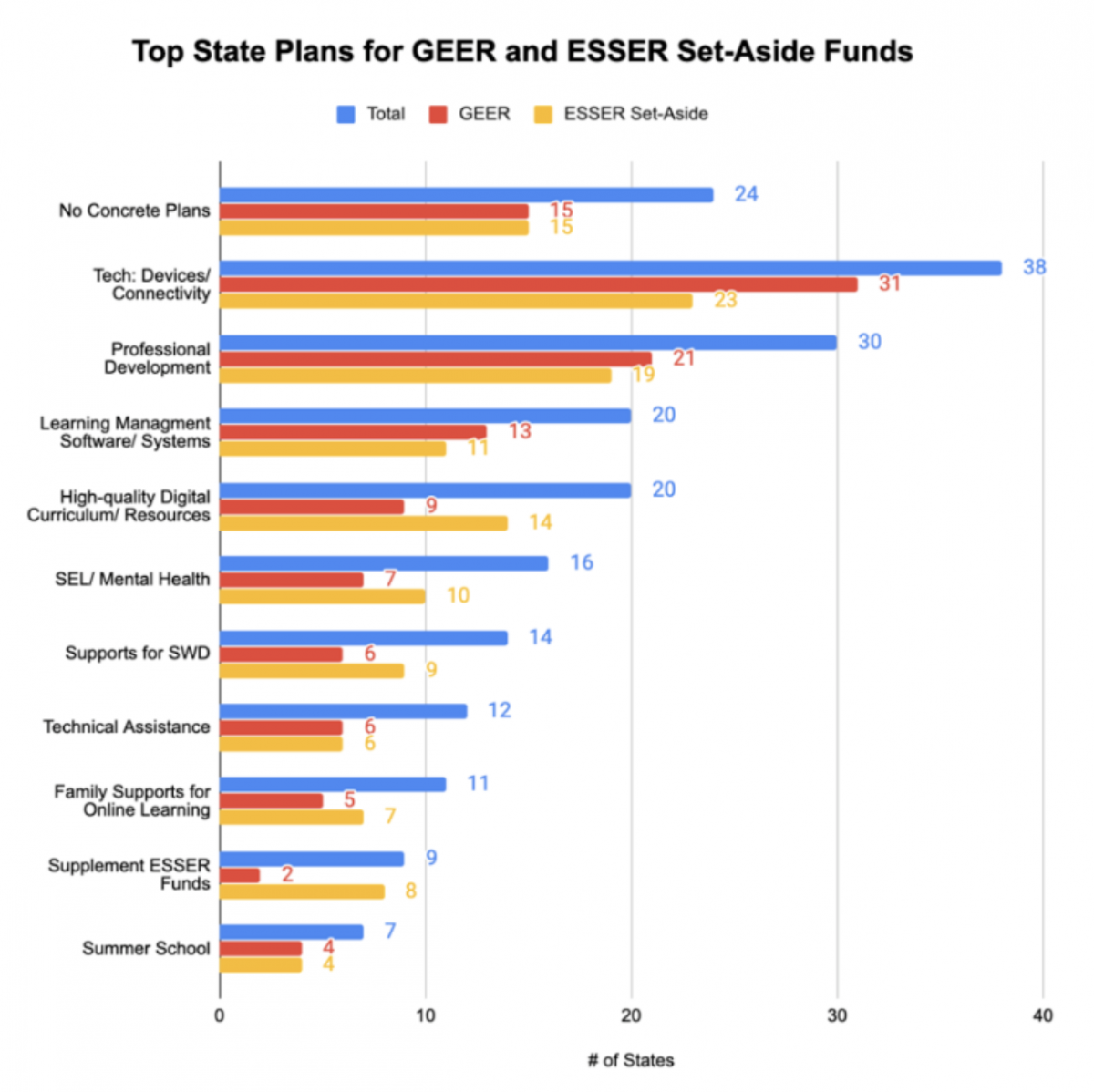The Future of CARES Act Funds: What You Need to Know
Learn More About Voyager Passport
Here we are at the end of a school year unlike any other. And as you probably already know, Congress has allocated an unprecedented amount of federal education funding to help school districts overcome the unique challenges associated with the pandemic.
When the CARES Act was passed in April 2020, it included $13.2 billion for an Elementary and Secondary School Emergency Relief (ESSER) fund and $3 billion for a Governor's Emergency Education Relief (GEER) fund. Since then, Congress has passed additional legislationthat makes billions more dollars available to school districts within the ESSER fund and other allocations.

How should schools spend this windfall?
In 7 Habits of Highly Effective People, renowned author Stephen R. Covey recommends beginning with the end in mind. So, how does that translate to optimizing ESSER funds?
Understandably, federal and state officials initially focused on using the funds to purchase devices and facilitate internet access. But while narrowing the digital divide is critically important to effectively delivering remote learning, student outcomes are not improved by new devices and better connectivity alone. I like to use the analogy of having a new car in your driveway without wheels—it may look great, but it's not going to get you where you want to go.
As an educator, it's important to focus on the end result of improved student outcomes. You can narrow that focus by asking the following questions in order:
- What specific outcome do I want to impact?
- What population of students am I focusing on?
- What program or content will help me achieve that specific outcome with that specific population of students?
- What device (tablet, laptop, etc.) will be most effective in delivering that program or content to those students?
- Can those students use that device to access that program or content from home and school?
If your state or district still has funds left to spend, consider deploying Voyager Passport® to help you achieve your end result.
So, why Voyager Passport?
- Research on outcomes among different student populations: Voyager Passport is research-proven to boost learning outcomes required by federal mandates under the Every Student Succeeds Act (ESSA). As an evidence-based solution, Voyager Passport earns ESSA’s Tier One rating by providing Strong evidence of producing positive results on K–5 student outcomes. Voyager Passport met the criteria for the Strong category due to the sample size and diversity of students studied, the statistically significant effect size of the results, and the similarity of results for English learner (EL) and non-EL students.
- Built-in assessment tools: Voyager Passport helps teachers make informed decisions with two types of assessment tools: a Placement Assessment and a Formative Assessment or Adventure Checkpoint.
- Adaptive learning framework: Does your literacy program travel with the student, or do you scramble to adapt when learning environments change? Voyager Passport enables remote learning with instruction in the five essential components of reading and includes language and writing—in just 30 minutes per day.
- Equity for all: With embedded
differentiation in each lesson for every skill and for every student at every point of use, Voyager Passport accommodates diverse learners who are engaged by different content and learn at varied rates.
Ultimately, the combination of federal funding and local flexibility provided to districts offers a unique chance to reimagine instruction. As the Education Strategy Group put it, "State and local leaders have a real chance to turn this crisis into an opportunity to drive new approaches to education." Looking back to 2009, the $5 billion in federal stimulus funds made available through Race to the Top and i3 grants after the recession presented "opportunities for state and local leaders to raise expectations for students, dramatically improve academic growth, increase postsecondary enrollment and success, and, perhaps most importantly, close equity gaps in K–12 and higher education." To phrase it more succinctly, now is the time for schools to innovate.
How are states spending their funds?
On March 12, 2020, Ohio became the first state in the nation to close its schools. By March 25, all U.S. public schools had closed, which gave administrators little to no time to plan for finishing the school year. By mid-June 2020, states had identified the following priorities for the incoming federal funds:

As you can see, the top identified priority was addressing the digital divide and equipping students for remote learning, and many states allocated a large portion of funds accordingly. Per The Hunt Institute's GEER fund utilization tracking:
- Hawaii allocated $15.01 million for devices and connectivity, including mobile hubs ($2.89 million); 12,000 new devices intended for use upon school reopening ($6.57 million); and 10,000 new devices for summer learning (about $5.46 million).
- Tennessee allocated $50 million for district device strategies to implement distance learning.
- Indiana allocated $61 million for improving connectivity and increasing the number of devices available to students and teachers.
- Oregon planned to provide district support during the transition to remote learning by expanding internet access and purchasing educational equipment.
- New Jersey planned to purchase digital devices and improve connectivity.
- Alabama allocated $10 million toward equipping all school buses with Wi-Fi capabilities to increase connectivity and help bridge the digital divide.
Professional development emerged as the second highest priority, which is unsurprising given the fact that many teachers were facing a steep learning curve in adapting their instructional methods and curricula to better suit remote learning. According to The Hunt Institute:
- In Florida, the Florida Department of Education (DOE) partnered with Florida Virtual School—a statewide, internet-based public high school—to provide professional development through a course titled "Virtual Teacher Training with COVID-19."
- In North Carolina, the North Carolina Department of Public Instruction is providing virtual professional development opportunities organized by subject.
- In Maine, the Maine DOE is holding regular virtual office hours and providing virtual professional development opportunities around instruction, culturally responsive practice, civic responsibility, and other topics.
Learning management systems and digital curriculum resources were the third highest priorities. Once again, the allocation data from The Hunt Institute matched up well:
- Oklahoma planned to either purchase a new learning management system (LMS) or enhance its existing system to support students in distance learning.
- Arkansas planned to provide an LMS to assist in delivering quality digital content.
- Illinois planned to support the development, deployment, and adoption of remote learning curricula and curricular resources.
- Florida planned to fund each school and district's efforts to identify curricula and content to support teaching and learning, as well as to create steps for monitoring student progress in courses delivered virtually and through distance learning.
How much have states spent so far?
According to the Committee for a Responsible Federal Budget, $149.5 billion of the original $150 billion in CARES Act funds had been disbursed to state governments as of August 4, 2020.
The federal DOE’s CARES Act ESSER fund portal shows grants by state though February 2021 that indicate those funds allocated to states have largely been awarded or spent. However, a Congressional Budget Office (CBO) estimate on ESSER I and II spending from that same time period states, “Because most of those funds remain to be spent, CBO anticipates that the bulk of spending of funds provided in the reconciliation recommendations would occur after 2021.”
So, if you're an educator still figuring out what to do with your funding, remember: Begin with the end in mind. Innovate. And, ultimately, aim to lead your students toward improved outcomes. You've got this!


